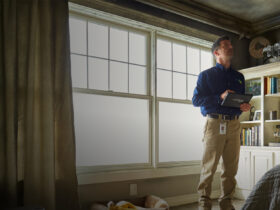Believe it or not, more than 70 percent of American homes have mold growing in the walls, floors, and carpets. If you’re a homeowner, this number is likely alarming. The last thing you want to deal with is a mold problem that threatens your home’s value and your family’s health.
Though mold is a major problem, it’s relatively simple to spot growth before it has a chance to do serious damage. So, how do you know if your house has mold growing somewhere inside?
Here are a few telltale signs of mold to watch for in your home.
Your Home Smells Musty
One of the first and easiest to identify signs of mold in your house is a musty smell in the air. Mold spores cause that unpleasant smell even if they’re not visible to the naked eye.
Pay attention to the way your home smells throughout the day. If you smell something musty or pungent, try opening the windows for a few minutes to see if the smell dissipates. If you can tolerate the smell, try to follow it to its source. Non-mold odors will be traceable and once you find the source, you can remove it.
However, if the smell permeates throughout the house or doesn’t have a distinct source, it’s likely that you have a mold problem indoors. Keep in mind that the only way to find out if the smell is, in fact, mold is to get your home inspected by a professional.
They’ll be able to identify the exact type of mold on your property so you can develop a solid treatment plan to get rid of it once and for all.
There’s Visible Growth on the Walls
Some types of mold won’t put out much of a smell. This makes it hard to detect growth early on. Luckily, mold is easy to spot once it starts growing in earnest.
Most mold species will make the walls and ceilings in your home look dirty or fuzzy even when they’re otherwise clean. This most often happens in bathrooms, kitchens, and areas where ventilation isn’t ideal.
Start paying attention to the way your walls look throughout your house. If you’re constantly cleaning them only to discover that discoloration and stains keep coming back, call a professional mold remediation expert.
Your Allergies Are Getting Worse
Believe it or not, mold can aggravate your allergies even when other allergens aren’t an issue. Start thinking about the way you and your family feel when you’re at home.
If you’re constantly sniffling or have noticed an increase in sneezes or coughing fits, it’s worth getting your home tested. Though the issue could be due to underlying health conditions, your increase in allergy symptoms may be indicative of mold in your home.
There Are Water Stains on the Ceiling
For new homeowners, watching for signs of water damage can feel overwhelming. After all, you just paid for your home and you expect it to be in good condition. That doesn’t mean that the house doesn’t have some type of water damage somewhere on the property.
The easiest spots to watch for water damage are the walls and ceilings of your home. Look for splotches or dirty patches near your plumbing fixtures or along parts of the wall that hide your plumbing’s pipes.
If you notice brown stains or warping in the paint and sheetrock, there’s a good chance that mold is growing in the walls. Remember, just because you can’t see it doesn’t mean that the mold isn’t there.
You’ll want to get your home tested for mold and have the water damage fixed as soon as possible. Leaving it in place puts you at risk for additional mold growth and damage.
You Had Flooding Issues in the Past
Floods are a serious problem. They introduce all sorts of contaminants into your otherwise clean house. Worse, they can bring mold spores in from outside your home.
If you’ve had a flood in the area, don’t wait. Get your home tested for mold even if you don’t notice any of the other signs of mold in your house.
It’s entirely possible that the previous homeowner missed the early warning signs of mold and water damage after cleaning up the flood damage. The sooner you get your home tested, the sooner you’ll be able to keep the mold from spreading throughout your house.
Humidity Levels Are Unusually High
Mold spores thrive in warm, humid areas of your house. As the mold grows, it can start keeping those areas more humid to foster more sustainable growth. Start paying attention to the way your home feels throughout the day, even when the HVAC system is running.
Are there parts of your house that feel overly humid despite your air conditioner running on full blast? If so, get your home tested.
There may be small amounts of mold starting to grow in certain areas of your home. Over time, they’ll spread into other rooms and make it harder for your HVAC system to properly manage humidity levels indoors.
The Walls and Floors Are Warping
Water damage often causes the walls and floors in your home to warp and sag. Unfortunately, this takes time and by the time you notice the change, you likely have mold growing in your house.
Pay attention to the way your floors feel underfoot and make sure the walls still look smooth and straight in each room. If you notice even the slightest change, get your home inspected as soon as possible.
Now You Know the Answer to, “How Do You Know If Your House Has Mold?”
If you’ve been asking your friends and family, “how do you know if your house has mold?” this guide should help you identify the most common signs. Keep an eye out for any changes in your property and make a note of them as soon as they happen.
Should you suspect water damage of any kind or notice any of these signs of mold in your house, schedule an inspection with a mold remediation specialist as soon as possible. The sooner you do, the easier it will be to get rid of the mold once and for all.
For more tips and tricks to help you keep your home in great shape, check out our latest posts.








